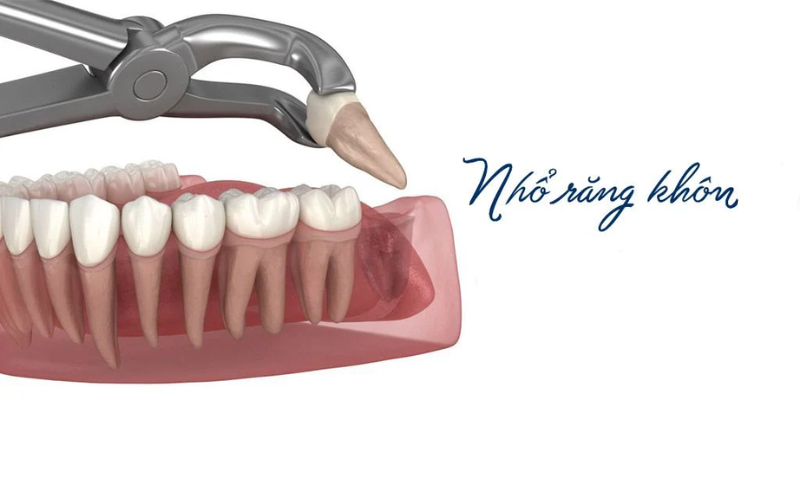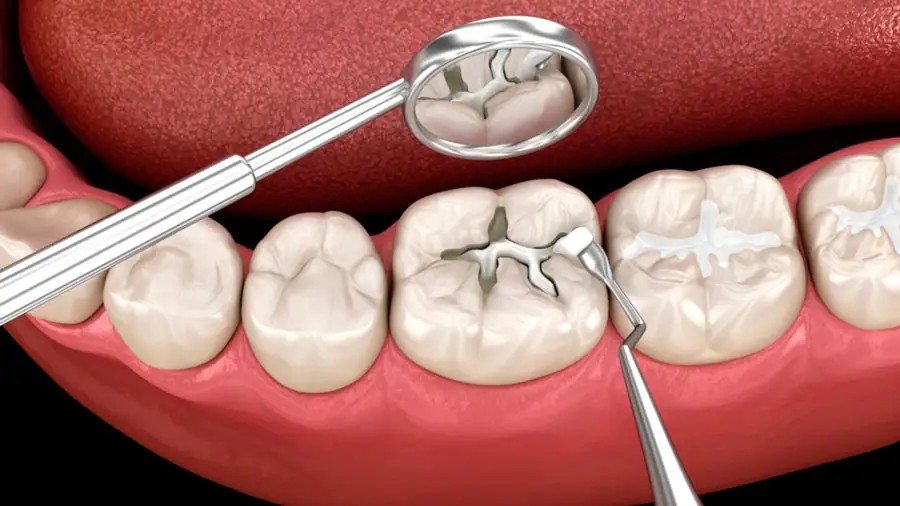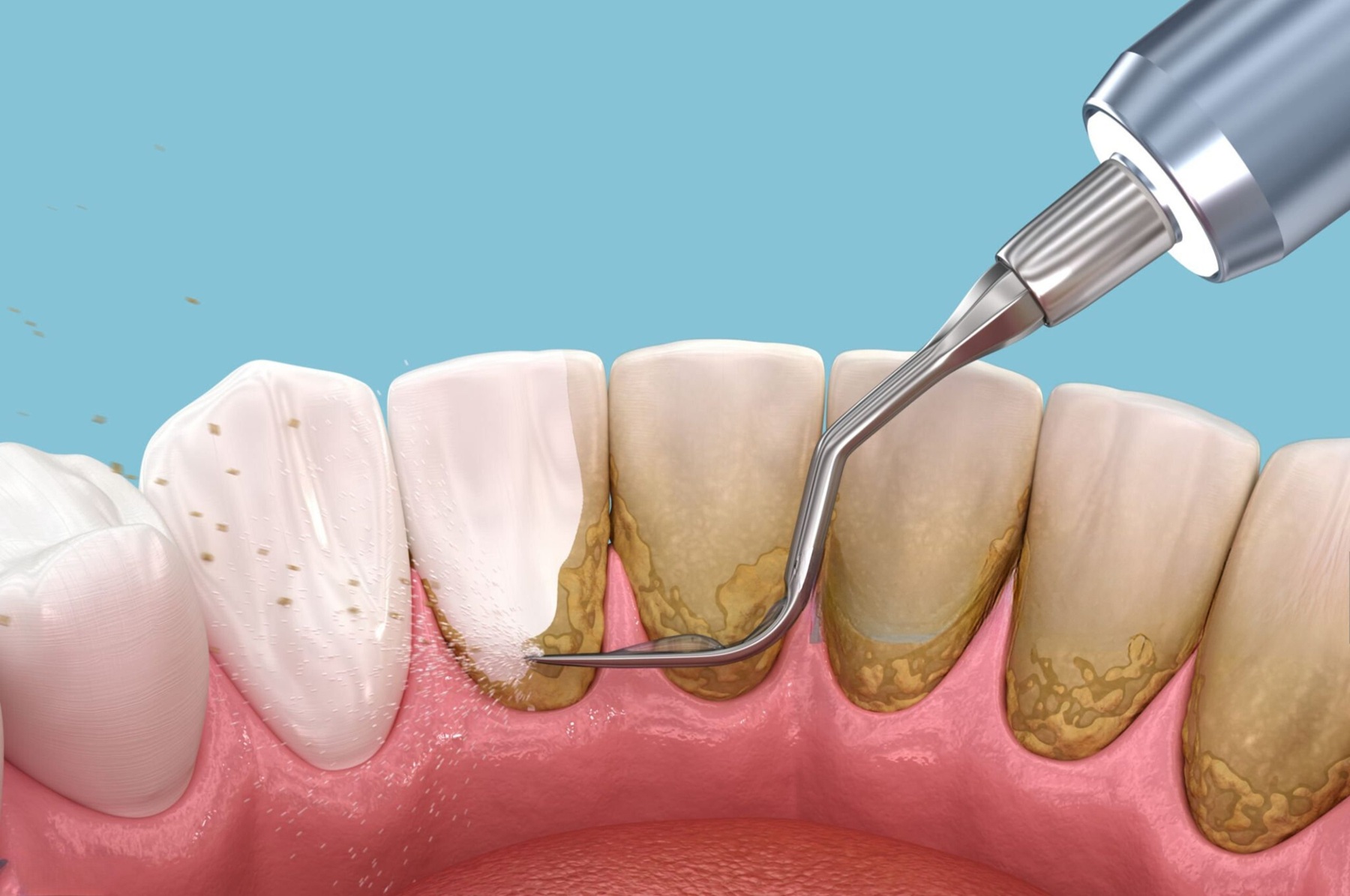When the dental pulp is damaged or infected due to tooth decay, trauma, or other causes, root canal treatment is a procedure aimed at preventing serious complications and preserving the natural tooth. So what is root canal treatment? What is the procedure and when is it necessary? Let’s explore the detailed content with Amanda Dental Clinic below!
What is root canal treatment?
The dental pulp is a soft tissue located at the center of the tooth, containing blood vessels, nerves, and connective tissue. It plays roles in sensation, nourishment, and dentin repair.
Root canal treatment (also known as endodontic therapy) is a dental procedure to remove infected or damaged pulp, followed by cleaning, shaping, and sealing the root canals to preserve the tooth.
In the past, teeth with pulp damage were often extracted. However, with advancements in technology, root canal treatment has become a common and effective method to preserve natural teeth.
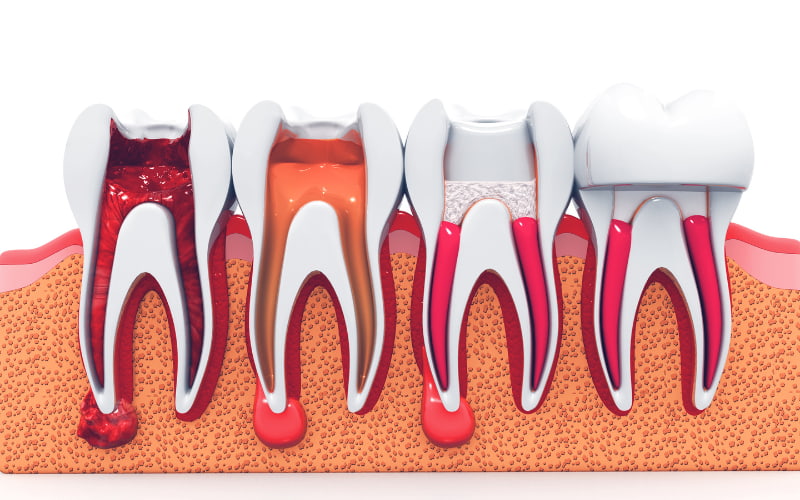
Why is root canal treatment necessary?
Because the pulp cannot heal itself, once attacked, it becomes weak, inflamed, and eventually dies. If left untreated, the infection can spread to the root tip, causing abscesses and bone loss, leading to loose teeth and other serious consequences affecting oral and overall health.
Besides infection, inflamed pulp often causes severe pain that does not subside with painkillers, making it unbearable and requiring professional dental help. This signals the need for urgent medical intervention to prevent further complications.
Tooth extraction leaves a gap that affects chewing, aesthetics, daily activities, and work. Replacing a lost tooth with a prosthetic one can be complex, affect surrounding teeth and tissues, and may not feel as natural as a real tooth.
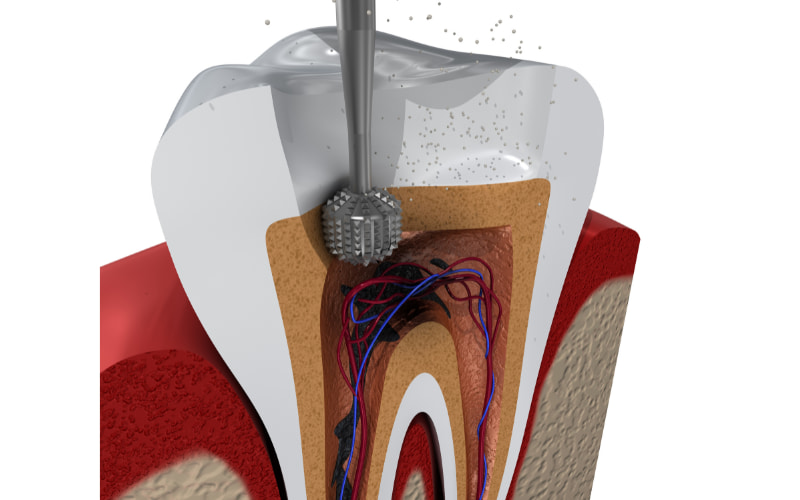
Which teeth need root canal treatment?
Teeth that typically need root canal treatment show the following signs:
- Teeth with pulp diseases such as: decay reaching the pulp, weakened pulp due to fillings, over-prepared teeth, or trauma causing pulp exposure or fractures.
- Teeth with periapical diseases such as: infection at the root tip forming large pus pockets (Abscess) in the gums and surrounding areas causing facial swelling and pain when chewing.
- Teeth requiring root canal treatment for prosthetics (bridges, crowns) or cosmetic purposes.
Note: Patients with underlying health conditions like heart disease, diabetes, or gout should have regular dental checkups for early detection and treatment to avoid affecting their systemic condition.
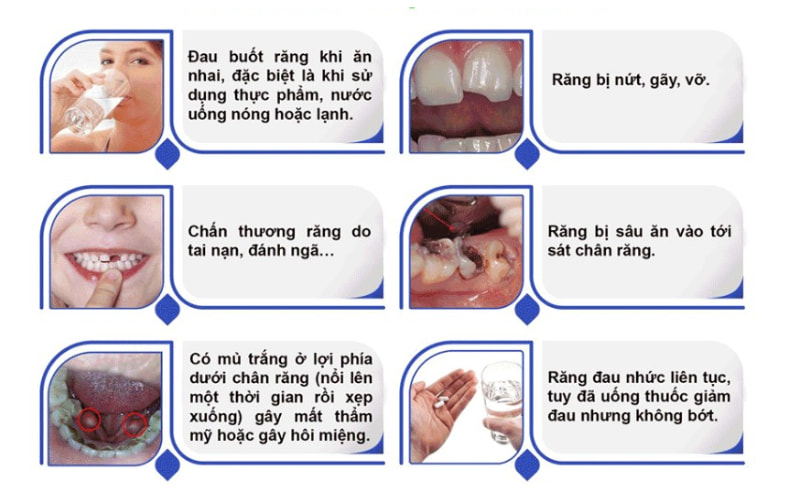
When is root canal treatment necessary?
Root canal treatment is needed when an X-ray shows the pulp is damaged due to infection. This leads to pulpitis, creating an environment for bacteria to thrive and spread.
Here are signs that a tooth may need root canal treatment:
- Toothache when eating hot or cold food.
- Loose tooth.
- Swollen gums near the affected tooth.
- Pus discharge from the affected tooth.
- Swollen cheek or jaw.
- Tooth discoloration.
Principles of root canal treatment you should know
To preserve the tooth and maintain chewing function, root canal treatment must follow three principles:
- Sterility.
- Complete removal of the pulp and proper cleaning and shaping of the root canals to allow proper sealing.
- Root canals must be sealed in three dimensions.
Important notes for root canal treatment
Root canal treatment is a complex dental procedure requiring precision and care. To ensure success, keep in mind:
- Ask your dentist about the procedure steps, duration, cost, and potential risks.
- Inform your dentist about any current medical conditions, medications, and allergies.
- Eat beforehand, as anesthesia may make eating difficult afterward.
- Stay relaxed and maintain a calm mindset.
- Avoid coffee and sugary drinks.
- Take prescribed painkillers and anti-inflammatories. Attend follow-up appointments to monitor recovery.
Standard root canal treatment procedure
The typical steps include:
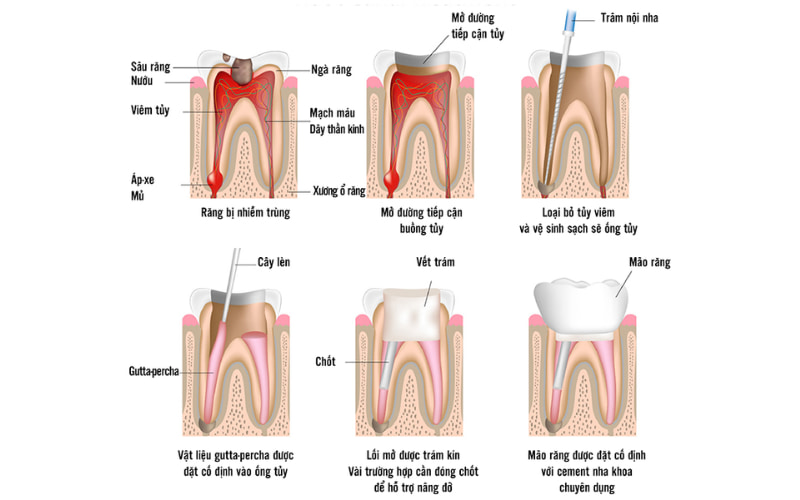
Before the procedure
The dentist takes X-rays to view internal canal structures, assess damage, and plan the treatment.
During the procedure
- Step 1: Local anesthesia to ensure a pain-free experience.
- Step 2: A rubber dam is placed around the tooth to isolate it and prevent swallowing cleaning solutions.
- Step 3: The dentist drills into the tooth to access the pulp chamber.
- Step 4: The canals are cleaned and bacteria are removed using endodontic tools.
- Step 5: If an abscess is present, it will be drained to relieve pressure and eliminate pus.
After the procedure
The canals are sealed and the tooth restored with a filling or crown. If signs of infection like swelling or burning appear, antibiotics may be prescribed.
How much does root canal treatment cost?
Cost depends on:
- Tooth location: Front teeth are generally cheaper than molars due to simpler anatomy.
- Severity: Mild inflammation costs less than severe or abscessed pulp.
- Number of canals: Molars with multiple canals cost more than single-canal teeth.
- Treatment method: Manual treatment costs less than mechanical methods.
- Clinic type: Private clinics usually charge more than public clinics.
- Dentist skill: Highly skilled dentists charge more.
- Equipment: Modern equipment tends to increase cost.
Below is the root canal treatment price list at Amanda Dental:
| Service | Unit | Price (VND) |
| Root canal treatment for single-root tooth | 01 Tooth | 800,000 |
| Root canal treatment for 2–3 roots | 01 Tooth | 1,500,000 |
| Root canal treatment for 2–3 roots in a single appointment | 01 Tooth | 2,500,000 |
| Post-core build-up after root canal | 01 Post | 1,000,000 |
| Retreatment of root canal | 01 Tooth | 2,500,000 |
Why choose Amanda Dental for root canal treatment?
Amanda Dental is a trusted and effective place for root canal treatment, chosen by many for the following reasons:
- Experienced team: Highly skilled, dedicated doctors.
- Advanced technology: European-imported equipment, continuously updated for optimal results.
- Absolute safety: European-standard Mocom Classic sterilization system to prevent cross-infection.
- Private space: Individual treatment rooms for comfort and peace.
- Transparent pricing: Clear, detailed price list for peace of mind.

How long does root canal treatment take?
A single root canal session can take 30 to 90 minutes depending on severity. Infected pulp may require 3–4 visits; exposed but non-infected pulp may only need 1–2 visits. Molars with multiple roots take longer than single-rooted teeth.
How to relieve pain after treatment
Yes, root canal treatment may cause pain depending on infection level, anesthetic effect, and pulp condition. Inflamed pulp causes more pain, especially in exposed teeth. Dentists will use local anesthesia to reduce pain during the procedure. Some discomfort may persist afterward.
Possible complications after root canal treatment
Though usually successful, some complications can still occur:
- Infection.
- Pain and discomfort.
- Nerve damage.
- Tooth fracture.
Unusual symptoms after treatment
- Incomplete cleaning (e.g., 4 canals but only 3 treated) may cause ongoing infection and pain.
- Improper sealing allows bacteria to re-enter, causing failure.
- Cracked root or broken filling material may prevent proper sealing.
Complications if not treated
Untreated pulpitis can cause severe complications:
- Oral infection.
- Brain abscess.
- Meningitis.
- Sinusitis.
- Orbital cellulitis.
- Cavernous sinus thrombosis.
How to care for your tooth after treatment
- Use a soft-bristled toothbrush and fluoride toothpaste. Brush at least twice daily, especially after meals.
- Use dental floss daily to clean between teeth.
- Avoid hard foods like ice, candy, or tough meat.
- Avoid sugary and acidic foods and drinks to prevent decay.
- Eat soft foods like porridge or soup for the first few days.
- Attend regular checkups to monitor recovery.
Success rate of root canal treatment
Root canal therapy has a high success rate for preserving natural teeth and eliminating infection. About 9 out of 10 treated teeth last 8–10 years. Crowning the treated tooth further increases longevity.
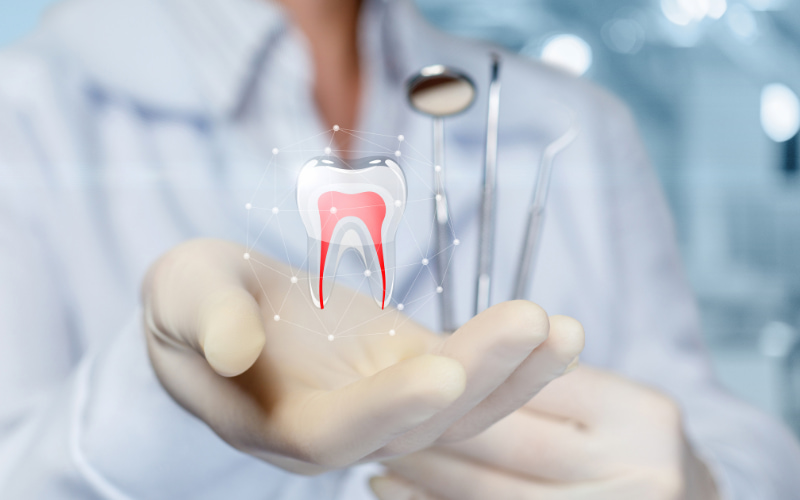
Teeth stay stronger with proper hygiene. Tooth longevity also depends on: remaining natural tooth structure (some is removed for access), oral hygiene, and chewing force.
Root canal therapy can be repeated if infection recurs. In persistent cases, the dentist may recommend apicoectomy (root-end surgery) to resolve it.
Root canal treatment plays a crucial role in preserving natural teeth, preventing dangerous complications, and maintaining chewing function. If you notice any abnormal signs, see a dentist promptly for proper diagnosis and treatment to protect your oral health.




